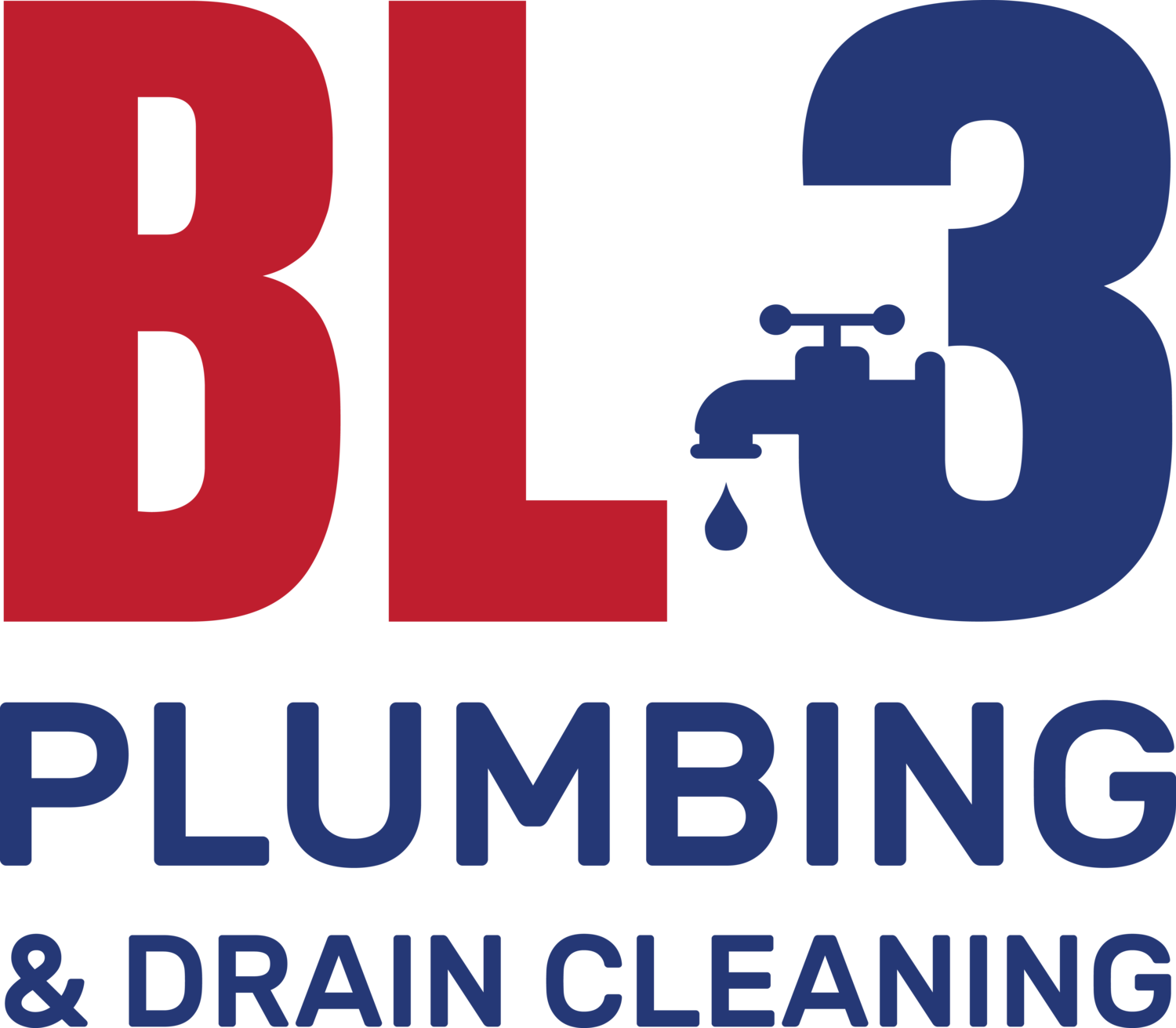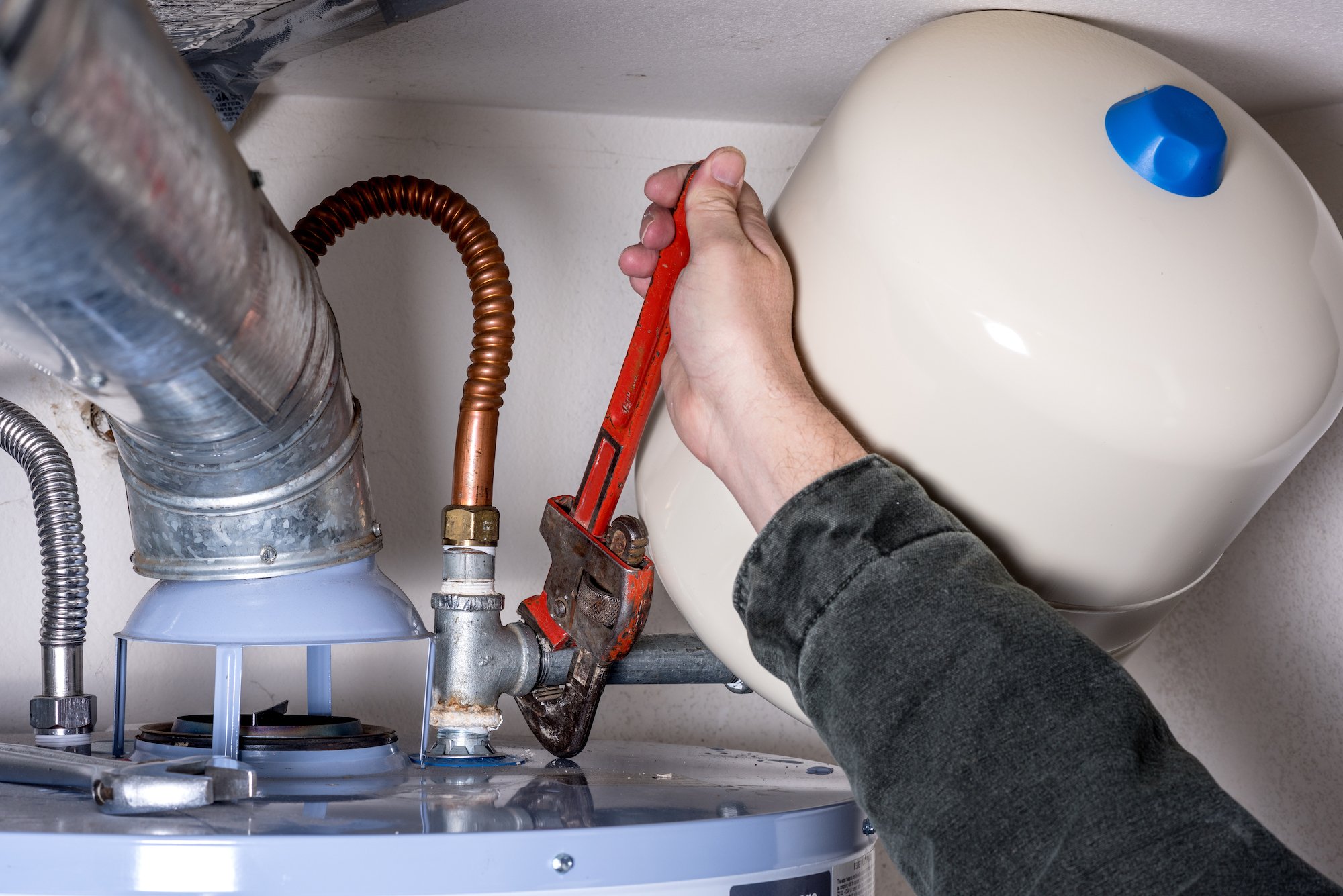Do you take hot showers for granted? What about that soothing blast of steamy water on tired muscles after a long day? Well, your trusty hot water heater makes all of that possible!
But let’s be real – you probably don’t think about your water heater until there’s a problem, right? One day, you go to wash the dishes or take a shower, and the water is lukewarm at best. Or even worse – you discover a giant puddle of water flooding the basement because your old heater has sprung a leak!
Not ideal.
While hot water heaters don’t get much fanfare, they play a critical role in any household. And just like other appliances, they need occasional repairs and maintenance to keep running in tip-top shape.
In this guide, we’ll walk through the most common water heater problems homeowners deal with and questions our team at BL3 Plumbing is asked on a daily basis:
“Why does my water heater keep leaking?”
“How do I get the pilot light working again?”
“Is it actually possible to run out of hot water?”
We’ll cover all this and more – from troubleshooting issues and doing quick fixes to knowing when it’s time to call in a pro. Because while hot water heaters are often out of sight and out of mind, no house should have to suffer through a lukewarm shower!
Hot Water Heaters 101
Not sure how your magical hot water maker actually functions? Let's break down the basics of common residential water heating systems.
Here are the two primary types used in most homes:
Standard Storage Tanks
These are likely what you currently have. Water is stored in an insulated steel tank between 40-80 gallons. Cold water enters, gets heated by gas burners or electric elements, and then exits via hot water pipes to fixtures when needed.
Benefits:
Lower upfront costs
Simple operation and installation
Drawbacks:
Run out of hot water with excessive use
Limited lifespan around 10 years
Energy loss from stored water cooling 24/7
Tankless On-Demand
As the name suggests, these instantly heat water without storage as it flows through the unit. Enjoy endless hot water on tap!
Benefits:
Unlimited hot water
Compact size
Long 20+ year lifespan
High energy efficiency
Drawbacks:
Can be an expensive purchase price
May require upgraded electrical systems
Inside Your Water Heater: Main Parts and Components
Water heaters may seem mysterious, but their operation depends on just a handful of key inner workings:
Burners or Heating Elements
These metal coils or arrays of gas burners actually heat the water by generating thermal energy. Elements use electricity while burners ignite natural gas or propane. They switch on when sensors indicate more hot water is needed.
Thermostats and Temperature Probes
Like your home thermostat controls air temperature; the water heater thermostat carefully maintains your hot water at a preset level of around 120°F. It communicates with sensors that continually monitor water temp. Most have adjustable dials allowing you to customize temperature settings.
Insulated Metal Tank
In standard tank models, the inner steel container lined with glass or other coatings holds heated water safely without corrosion or leaks. Insulation wrapped around it keeps warmth from dissipating too fast, so less energy is wasted re-heating cooled water. Insulation types range from foam to eco-friendly inorganic fibers.
Water Supply and Drain Valves
Hot and cold water pipes connect to the tank through inlet valves that control water actively flowing into the system. Drain valves provide an access point for flushing out sediments that build up over time. Shut-off valves allow for isolating the heater for repairs.
Durable Outer Shell
A coated steel or plastic jacket wraps around the entire unit to protect inner components. This often features branding, serial numbers, wiring access points or panels, and warning labels users shouldn’t remove.
Why is My Water Heater Leaking?
Of all the common water heater problems homeowners face, leaks seem to be the most vexing. Few things are more annoying than discovering a giant puddle covering your basement floor because your hot water heater decided to spring a leak!
But don't panic – water heater leaks are usually easily repairable. The key is knowing what causes them in the first place. Here are some of the most common culprits of water heater leaks:
Faulty Pressure Relief Valve – This little valve is an important safety feature on all water heaters. It releases excess pressure to prevent an explosion. But if it's broken or improperly calibrated, it can leak water non-stop.
A Corroded Tank – Over years of constant heating and cooling, water tanks corrode, allowing water to seep out slowly. If your water heater is over 8-10 years old, corrosion is likely the cause of leaks.
Loose Pipes – The pipes connecting to your hot water tank can also leak if fittings become loose over time due to mineral buildup. Drips usually show up where pipes meet the tank.
While a small leak may seem harmless, it's important to repair any issues immediately. The longer you wait, the worse the corrosion and leaks become. Catching problems early saves you money and prevents water damage throughout your home.
Water Heater Repairs and Maintenance
Before throwing in the towel and buying a whole new hot water heater, there are a few repair tasks you can try yourself to fix minor leaks and improve performance.
Re-lighting the Pilot Light
Gas water heaters have a pilot light that ignites the burner to heat the water. If this tiny flame goes out, you’ll have no hot water. Relighting it is a pretty straightforward DIY task. Here’s a quick step-by-step:
Locate the pilot assembly on the bottom of the tank where the gas line connects.
Turn the gas valve to “pilot.”
Press the reset button while holding a lit match or lighter near the pilot opening for 60 seconds.
Once lit, continue holding the reset button down for another 30 seconds.
If the flame stays on, switch the gas valve back to “on” and enjoy your hot water!
If the flame immediately goes out, repeat steps 2-5.
If repeatedly trying to light the pilot fails, it likely means there is a block or clog in the gas line or pilot assembly. Calling a professional for service is the next best move.
Adjusting the Temperature
Scalding water is dangerous, but lukewarm showers are no fun either. Adjusting your water heater’s temperature keeps your household happy. Gas models have adjustable dials, while electric heaters use thermostats. Some high-tech tankless heaters even connect to WiFi for smart temperature control from your phone!
Here are the standard safe temperature settings according to types of use:
115-120°F for households with small children/seniors
125°F for most household needs
130-140°F for dish/laundry sanitization
Checking the Pressure Relief Valve
As mentioned before, this little valve does the important job of releasing excess pressure from your heated tank to prevent an explosion. After years of exposure to high heat and mineral buildup, they can get stuck open, allowing water to leak continuously.
Testing and replacing faulty valves takes five quick steps:
Locate the pressure relief valve on the tank (usually near the top).
Place a bucket underneath to catch any water.
Pull up on the lever and hold for 30 seconds to release pressure.
If water flows freely from the valve, it needs to be replaced.
Drain the tank, unscrew the bad valve, apply thread seal tape on the new one, and install it.
Catching a corroded pressure relief valve now prevents leaking disasters down the road! Knowing when to DIY small repairs vs. calling in a pro for replacement is key to saving money and hassle.
Signs It’s Time To Replace Your Water Heater
As with any appliance, water heaters gradually wear down over time. But when is it actually time to replace rather than repair your old unit? Here are some clear signs indicating your water heater’s days are numbered:
You’re Deaily With Frequent Pilot Light Outages
If you’re constantly re-lighting your gas heater’s pilot light, it likely points to a deeper issue like a faulty thermocouple or gas line clogs. This likely means that your water heater is reaching the end of its lifespan and it’s time for a replacement.
You See Rust Accumulations
Some surface rust along the bottom of the tank is normal. But if you notice extensive rust and corrosion, the tank integrity is probably compromised, allowing leaks. Better replace it before it fails completely.
Your Unit Has Reached A Ripe, Old Age
Standard tanks last 8-12 years before needing replacement. Tankless models last longer, around 15-20 years. If your water heater is creeping up in years, replacement is likely around the corner.
You’re Getting Hit With High Energy Bills
If your monthly bills suddenly spike and you know it’s not from overuse, your heater may not be heating efficiently. Swap it out to save energy while reducing the amount you’re paying in high-cost utility bills.
The Water Takes A Long Time To Heat Back Up
Recovery time indicates how quickly your heater reheats water between uses. If showers gradually get colder or you frequently run out of hot water, your heater can’t keep up with demand.
You’re Hearing Strange Sounds
Major gurgling, popping, or banging coming from the tank points to internal failures. (No, you’re not haunted.) Minor sounds, however, can simply mean sediment build-up is affecting performance. Don’t let these sounds go unchecked!
Don’t Let Your Hot Water Heater Become A Hot Water Headache
You now know the common issues and questions homeowners face when it comes to water heaters – from troubleshooting leaks to knowing when to call it quits and install a shiny new one.
Here are some key ideas to remember:
Water heater leaks are often repairable if caught early. Faulty pressure relief valves, corrosion, and loose pipes are common culprits.
Maintenance like re-lighting the pilot light, adjusting temperature, and testing valves can improve performance and extend the life of your existing unit.
If your water heater is over 8-12 years old, frequently needs repairs, or you have high energy bills, replacement is likely your best option.
When the time comes, hire professional plumbers like us to safely remove old hazardous tanks and choose the optimal new system for your home. Think a standard tank fits your family’s needs? Or maybe a tankless heater for endless hot water? Connect with our team to explore the options without any pressure.
The team at BL3 Plumbing handles water heater installations, repairs, and replacements across the greater Oklahoma City metro area. Book a service call today to have one of our experts inspect your home’s water heater for just $45 (fee waived with any repair/replacement service).


